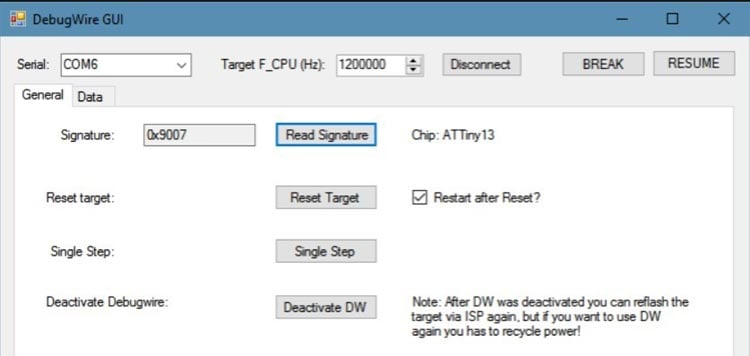

The design is open source schematic and PCB layout are available publicly. This made me abandon the project until I get better at programming. The ESP-Prog Board is the official debugging board of Espressif, the designers of the ESP32 chip. The one time I actually really wanted to use a debugger, the particular pins were used for the function I wanted to debug, and connecting ANYTHING to them would make the function not work properly. In some cases I just toggle the pin whenever a particular function is executed just to see, if and how fast it works. Personally I rarely use debugging features of my PICKit3, as most of the stuff I do is not that complex.
ARDUINO IDE DEBUGGER SERIAL
The usual way is to use serial interface instead.

In case of Arduino this feature is not included because it requires an external programming interface, and that adds costs. Now suppose you need to inspect an array value in a for loop. If your code doesn't already use the Serial object, then add this to setup (): ifdef DEBUG Serial.begin (9600) endif. Scaffolding involves placing the following line at the top of your code: define DEBUG 1. It makes them much easier to use for developers. Scaffold code is another technique to use. I’m pretty sure all microcontrollers that feature in circuit serial programming have some form of debugging hardware included. Posted in Arduino Hacks, Microcontrollers Tagged arduino, debug, debugging Post navigation There’s nothing you can’t do a million other ways here, but it is an excellent step-by-step tutorial for getting started without breaking the bank. That’s why you often see, for example, Raspberry Pi Picos debugging other Picos. If you know the protocol, it is easy enough to get a processor to speak it for you. Although these adapters are often proprietary, sometimes they aren’t, or they have been reverse-engineered. A few spare pins on the CPU and some sort of adapter would give you most of what you wanted from an emulation system. Then, CPUs started adding debugging hardware right on the chip. These were expensive, difficult to deploy, and rare. There was a time when having a god-eye view of your embedded system required an expensive in-circuit emulation system. There are design files on GitHub (and the firmware), but you could probably pull the same trick with any of the available CH552 breakout boards.

The CH552 board in question is a good choice, primarily because it is dirt cheap.
ARDUINO IDE DEBUGGER HOW TO
However, the latest IDE has the ability to work with external debuggers and if you want to get started with a classic ATMega Arduino, shows you how to get started with a cheap CH552 8-bit USB microcontroller board as the debugging dongle. That’s a shame, too, because the chips used have that capability. One of the things missing from the “classic” Arduino experience is debugging.


 0 kommentar(er)
0 kommentar(er)
